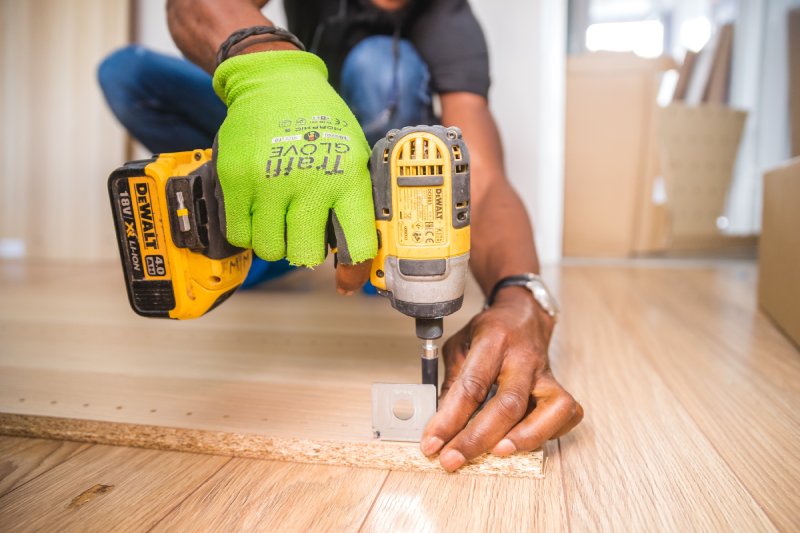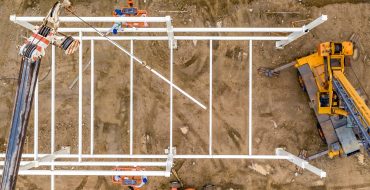
Everything You Need to Know About 2023 Building Materials Prices
Everything You Need to Know About 2023 Building Materials PricesConstruction contractors have a lot to deal with—and right now, one of the biggest concerns is the rise in material prices. You’ve p
CONTINUE READING >
Overcoming Supply Chain Issues in Construction
Overcoming Supply Chain Issues in ConstructionThere are plenty of supply chain issues in construction, but the good news is that they’re not insurmountable. The construction industry is currently fa
CONTINUE READING >
Here’s What You Need to Know About IoT in Construction
Here’s What You Need to Know About IoT in ConstructionThe construction industry has become increasingly technologically advanced, so it’s hardly surprising that IoT is taking off.The global popula
CONTINUE READING >
Construction Insurance in 2022: Pain Points and Solutions
Construction Insurance in 2022: Pain Points and SolutionsDespite its continued growth, the construction industry has seen its fair share of challenges in the past few years. According to Woodruff Sawy
CONTINUE READING >
5 Major Opportunities Driving Sustainable Construction in 2022
5 Major Opportunities Driving Sustainable Construction in 2022With the future of our planet hanging in the balance, the construction industry still has a lot of challenges left to overcome before it r
CONTINUE READING >
Improving Construction Safety: What’s Wrong and How to Fix It
Improving Construction Safety: What’s Wrong and How to Fix ItConstruction sites are dangerous places, so you need to do everything you can to make them as safe as possible. That starts with understa
CONTINUE READING >
The Paint Shortage of 2022
The Paint Shortage of 2022It seems like everything is in short supply, including paint.While COVID-19 disrupted supply chains worldwide, paint suppliers faced a massive surge in demand. Countless peop
CONTINUE READING >
How to Prevent Delays in Construction Projects
How to Prevent Delays in Construction ProjectsCompanies across the nation are facing construction delays, but the good news is there are a few things you can do to prevent setbacks. Construction delay
CONTINUE READING >
How to Adapt Buildings to Climate Change
How to Adapt Buildings to Climate ChangeFollowing a dangerous trend, weather in 2022 has been anything but stable. As of July 11, there have been “9 weather/climate disaster events with losses excee
CONTINUE READING >
Major Trends in the Plumbing Industry in 2022
Major Trends in the Plumbing Industry in 2022Without question, the past few years have been a wild ride for the construction industry, affecting all sectors, redefining consumer needs and expectations
CONTINUE READING >
Why Is There a Building Material Shortage?
Why Is There a Building Material Shortage?It’s no secret that the pandemic has taken its toll on a lot of industries, slowing them down. So far, the construction industry seems to have gone the othe
CONTINUE READING >
All About the Cement Shortage
All About the Cement ShortageWritten by Morgan Kaenzig de Denus, AMAST ContentSince the onset of the COVID-19 pandemic, shortages have been a common occurrence. Today, many parts of the U.S. are facin
CONTINUE READING >
The Biggest Opportunities for Sustainable Construction in 2023
The Biggest Opportunities for Sustainable Construction in 2023Table of contentsBuilding MaterialsResidential ProjectsSmart CitiesModular ConstructionNew Energy-Efficient TechnologyLean ConstructionBec
CONTINUE READING >
2023 Construction Industry Trends to Watch Out For
2023 Construction Industry Trends to Watch Out ForModular Design and PrefabricationFewer WorkersGreen Building and PracticesMaterial Shortages and Price UncertaintiesMore TechnologySmart CitiesPrepare
CONTINUE READING >
What Are the Most Expensive Construction Materials?
What Are the Most Expensive Construction Materials?Construction material costs have risen recently, but which materials are most expensive? In recent years, building materials prices have been on the
CONTINUE READING >
Drones in the Construction Industry
Drones in the Construction IndustryWritten by Morgan Kaenzig de Denus, AMAST ContentDrones are already revolutionizing the construction industry—and they’re only going to become more popular.The c
CONTINUE READING >
Researchers harness algae to ‘grow’ construction cement
Researchers harness algae to ‘grow’ construction cementBy BRUCE FINLEYRead the original article here.DENVER (AP) — The massive worldwide pouring of concrete as developers densify cities could be
CONTINUE READING >
5 Ways the Construction Industry is Changing in 2022 Due to COVID-19 (For Constr
5 Ways the Construction Industry is Changing in 2022 Due to COVID-19 (For Construction Pros)While almost every industry has been affected by COVID-19, the challenges experienced by contractors have be
CONTINUE READING >
How a Long-Sought Bill Could Make Construction Work Less Deadly (New York Times)
How a Long-Sought Bill Could Make Construction Work Less Deadly (New York Times)Carlos Moncayo, 22, died seven years ago at a Manhattan construction site. A bill on Gov. Kathy Hochul’s desk aims to
CONTINUE READING >
Construction’s labor, economic numbers begin to show cracks (Construction Dive
Construction’s labor, economic numbers begin to show cracks (Construction Dive)by Joe BousquinRead the original article hereDive Brief:Contractors reported fewer unfilled job openings in May as over
CONTINUE READING >
Making Concrete More Sustainable Through Restoration (Construction Pros)
Making Concrete More Sustainable Through Restoration By Keith Armishaw Read the original article here. We rely on concrete for many aspects of life—the roads we dr
CONTINUE READING >
Lumber bubble 2.0 just burst—here’s when to expect the best deals (Fortune)
Lumber bubble 2.0 just burst—here’s when to expect the best deals BY WILL DANIEL Read the original article here. Since the beginning of the pandemic, lumber prices have been more vol
CONTINUE READING >
Strong Employment Numbers Ease Some Industry Recession Fears (ENR)
Strong Employment Numbers Ease Some Industry Recession Fears (ENR) Read the original article here. By Alisa Zevin Following months of volatility in the stock market, along with record high infl
CONTINUE READING >
The 8 largest OSHA fines of Q1 2022 (Construction Dive)
4 things every contractor should know about insurance By Matthew Thibault Read the original article here. For trench safety, fall protection and other violations, the agency doled out hefty
CONTINUE READING >
Infrastructure act will draw workers to trades, but training is key: Walsh (Cons
Infrastructure act will draw workers to trades, but training is key: Walsh (Construction Dive) The workers in the construction site[/capti
CONTINUE READING >
All About Bendable Concrete
All About Bendable ConcreteWritten by Morgan Kaenzig de DenuTraditional concrete is brittle and has good load-bearing capacity, but it often fails under tensile load or cracks due to temperature chang
CONTINUE READING >
Virtual Reality in the Construction Industry
Virtual Reality in the Construction Industry Written by Morgan Kaenzig de Denus, AMAST Content Virtual reality is becoming increasingly popular in a variety of industries, including the construction
CONTINUE READING >
Sustainability in the Construction Industry
Sustainability in the Construction IndustryThe construction industry is responsible for a large percentage of our annual CO2 emissions, but things are starting to change for the better. (Picture) Fro
CONTINUE READING >
Getting the Most from your Team with Construction Technology
Getting the Most from your Team with Construction TechnologyGetting the Most from your Team with Construction TechnologyMARCH 29, 2022 BY JOHN BIGGSRead the original article by Procore here.The U.S.
CONTINUE READING >
Why modular has not clicked in commercial construction (Construction Dive)
Why modular has not clicked in commercial construction (Construction Dive)Offsite building techniques should be a boon for the industry, but modular's market share in North America is under 6%. Why?
CONTINUE READING >